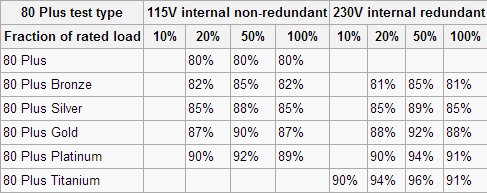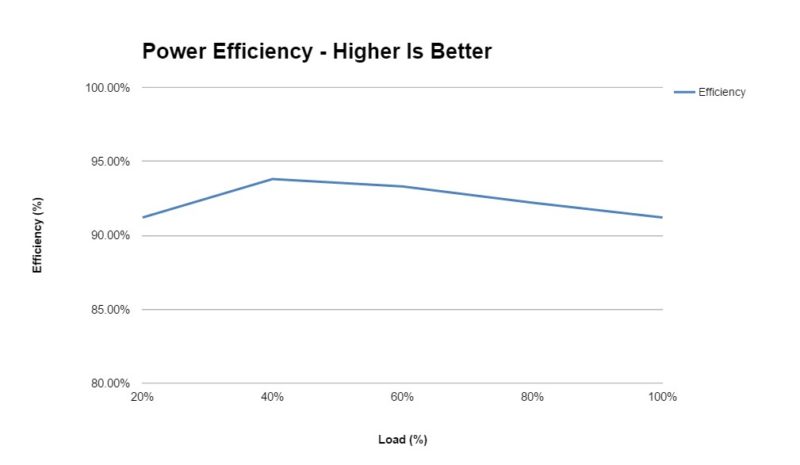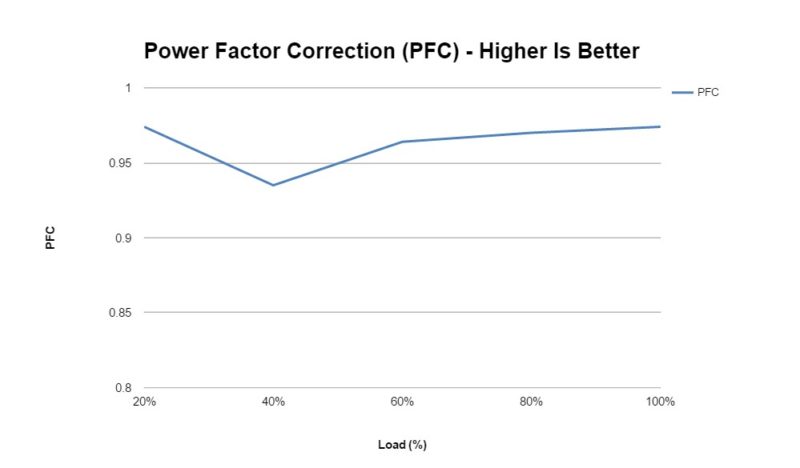InWin Classic Series 750W 80 Plus Platinum PSU Review
Peter Donnell / 8 years ago
Efficiency, PFC and Voltage Regulation
Voltage Regulation
To test voltage regulation we load the power supply to five different load scenarios that give an equal spread of load across every single rail. So that means 20% on all rails, 40% on all rails and so on. We then calculate the average deviance of each rail from its expected voltage.

Overall, the performance is pretty solid, there’s some deviance on the rails, but it’s well within a safe margin. The only one of concern was the 5V rail, which suffered noticeable droop at 20% and 100% load, but again, it was operating within a safe margin.
Power Efficiency
Power efficiency is measured by calculating actual supplied wattage divided by the wattage drawn at the wall/plug, multiplied by 100 to give a percentage. We then compare that to the particular 80 Plus certification the company claims to see if it meets that. You can see the 80 Plus certifications below, we always test 230v power supplies.


Efficiency was an easy thing for the C750, falling right within the 80 Plus Platinum guideline, meaning you’ll be wasting as little power as possible, and that’s always a very good thing for any PSU.
Power Factor Correction
Power Factor Correction is the ratio of the real power flowing to the load, to the apparent power in the circuit. The aim of PFC is to make the load circuitry that is power factor corrected appear purely resistive (apparent power equal to real power). In this case, the voltage and current are in phase and the reactive power consumption is zero. The closer the number to one the better as this allows the most efficient delivery of electrical power (Source – Wikipedia).

PFC is rock solid, and while there is a small drop around 40% it’s pretty minor, as the overall score is very high throughout.



















